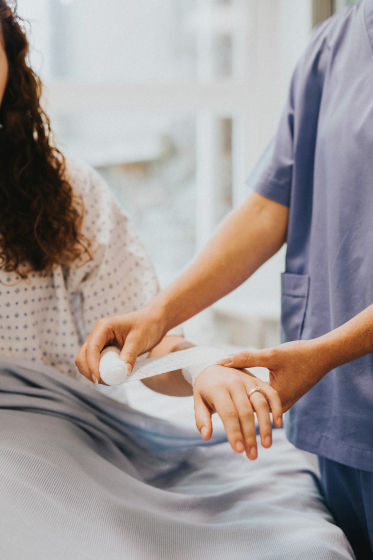A new material will be developed to promote revolution, healing and restoration in wound treatment methods

by rawpixel
Materials that help repair of wounds, such as collagen sponge to aid in healing of burned bones and implants used for repair of broken bones, have been developed so far. However, as the process of repairing wounds changes over time, researchers at Imperial College London interact with wounds to create new biomaterials that promote healing in a manner consistent with that occasion It developed.
New material could 'drive wound healing' using the body's inbuilt healing system | Imperial News | Imperial College London
http://www.imperial.ac.uk/news/189689/new-material-could-drive-wound-healing/
New materials could 'drive wound healing' by harnessing natural healing methods - ScienceDaily
https://www.sciencedaily.com/releases/2019/01/190107075551.htm
Researchers developed a technology called Traction force-activated payloads (TrAPs). Ben Almquist, one of the researchers, described the possibility that TrAPs that interact with human tissues to promote natural healing of the body may become a new generation material and incorporate it into existing medical materials It is said that it can be a revolutionary method of treatment.
In the repair process of human wounds, the cells move over the collagen scaffolds like a spider on the nest. At this time, a special protein is activated to start repairing the wound by cell movement. Researchers designed TrAPs as a way to recreate such self healing of wounds. Researchers explain that a "customizable handle" that allows cells to grab into a three-dimensional conformation called aptamer , which binds to proteins, is attached to one end of the structure. In addition, the opposite end of this structure is made to stick to a scaffold like collagen.
The following movies also explain the mechanism of TrAPs ... ...
TrAPs: DNA Nanotechnology for Wound Healing - YouTube
Here I explained that with TrAPs "When packaging a package containing the treatment required by the cell is placed around a wounded cell, the cell grabs it and opens it".

In laboratory experiments, it is said that cells moving a collagen scaffold attracted TrAPs. TrAPs were undone like shoelaces when pulled and activated proteins necessary for repairing the wounds.
In addition, researchers have discovered that changing the handles of TrAPs will change the reacting cells and let the TrAPs release certain proteins. This will allow TrAPs to interact with the appropriate cells according to the wound repair process and produce the substances necessary for repair.
This was the first time for artificial materials that succeeded in activating different kinds of proteins necessary for repairing wounds. "The way to use cell movement to activate healing is seen in various living creatures, from sponges to humans," Almquist said and TrAPs imitate wound repair methods in the natural world I explained what I am doing.
Since this approach can be applied to different kinds of cells, it can be used for various bruises such as broken bones and tissues and nerves damaged by heart attacks. It is also considered to be applicable to things that are said to be hard to cure in modern treatment such as diabetic foot ulcers.

by rawpixel.com
Furthermore, since TrAPs is 100% man-made & how to make it is clear, it can be created in laboratories other than Imperial College London, and it can be scaled up to commercial level. It is also possible to develop more advanced treatment methods using this technology.
Related Posts:
in Science, Posted by darkhorse_log







